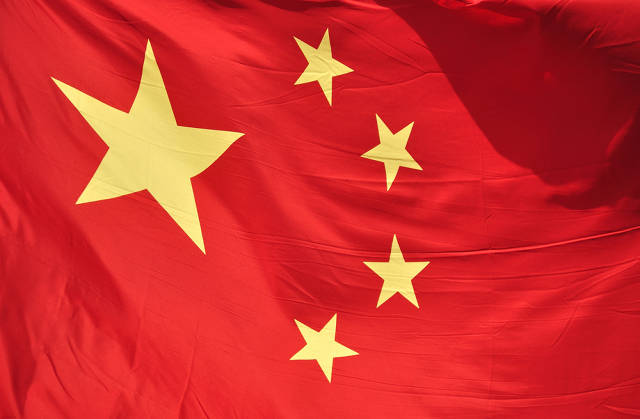WILL THE PASSING OF WORLD LEADERSHIP FROM THE UNITED STATES TO CHINA BE PEACEFUL?
Yes.
The starting point here is my belief that China will be the world leader in 2052. In 2052 China will have a population three and a half times bigger than that of the United States. The Chinese economy will be nearly two and a half times larger, and Chinese per capita production and consumption will be more than 70% of the U.S. equivalents. China will be the premier driving force on the planet.
In some ways this is already the case. Current China is capable of acting in a manner that far exceeds the maneuverability of the two competitors for global supremacy: the European Union and the United States. The United States still has the biggest muscle (the U.S. GDP equals 13 T$/yr, similar to that of the EU), but China is much more agile in the use of its somewhat smaller muscle (China’s GDP is near 10 T$/yr). Militarily the United States is still more powerful outside U.S. territory, but economically the Chinese influence is rising fast. It does not weaken the Chinese hand that it already owns 1 T$ of U.S. federal debt, one-quarter of the U.S. federal debt held by foreigners. This equals ownership of more than one month of the total output of the U.S. economy.
Many believe that China won’t reach hegemonic status because of lack of domestic resources or because of counterrevolution. My view is that China has sufficient coal and shale gas to run the economy in the transition stage, enough sun to fuel it in the long run, sufficient understanding of the climate threat to work up front to reduce the loss, and a sufficient tradition of Chinese independence to be willing to develop internally the resources it does not currently hold. But most important is the willingness and the ability of the Chinese to govern investment flows so as to achieve their goals. It should also be remembered that in the long run, China will no longer need all the energy and resources it currently uses for the production of export goods. In the long run it will suffice to have a sustainable interior supply of energy and resources sufficient to provide for the Chinese population, which will peak at 1.4 billion people around 2020 and be down to 1.2 billion in 2052.
Clearly things can go wrong for China, but I think this will take time. The alignment of the interests of the Chinese Communist Party and the great mass of Chinese is near perfect. Both need rapid growth in per capita consumption. Both will applaud when it is achieved. Both will hurt when it fails, and try once more. There is, of course, at any time a group that would like to emphasize values other than material growth, but I believe they will be in the minority for a long time (just like in the United States), and their softer goals suppressed.
To do more with less will be the mantra of Chinese growth, in order to continue the goal of the last two thousand years, namely, to be a self-sufficient China independent of the barbarians from outside the Middle Kingdom. Increased energy and resource efficiency will be pursued with enthusiasm. Since both are achievable in principle, through the planned use of money and manpower, they will be achieved.
So what will the Americans do when the Chinese hegemony further exposes its full body? Not much. I believe in a friendly resolution of the potential conflict between China and the United States, because the United States also has enough resources inside its boundaries to run a self-sufficient shop for its inhabitants. It is true that the country currently depends on vast oil imports from abroad, but like China, the United States has enough coal and shale gas to run its economy for a long time (assuming little real GDP growth in the country over the next 40 years, as I do). It has large agricultural muscle (more than sufficient for its domestic population--and if Americans decide to eat more healthily, also for quite a bit of biofuels). Furthermore the United States has some space that will be livable after climate change. Water may be a problem where it is currently needed, but activities can and will be moved if that is required to have enough water. And GMO crops will be used large-scale to reduce water scarcity, despite their drawback. If the American democracy finally decides to try to solve its obvious societal problems in a collaborative manner, the U.S. investment capacity is huge and the problems solvable.
I think the latter sentence contains the essence of the U.S. fate over the next 40 years. The United States could maintain its hegemony if it decided to do so. But I don’t think the American system of governance will be capable. Quick, bipartisan decision making is certainly not a U.S. strength. And I see little that will change this fact on a 40-year horizon. Since the country is already rich, and the resources are there at least for living at a slightly lower footing, the United States can allow itself to slide into a secondary role, as a provincial and self-content country. Much like Europe smoothly moved down to second rank after the two World Wars.
Both China and the United States will be bothered by climate change. But both countries are big enough to include places that are relatively less affected. Their starting points are very different, the United States being rich and China much poorer (GDP per person today is one-sixth of the U.S. rate). But their governance systems differ, will differ, and will help China move fast when the United States will be floundering. This won’t create war since China’s ambition is to be self-contained.
Via: "Fast Company"





No comments:
Post a Comment